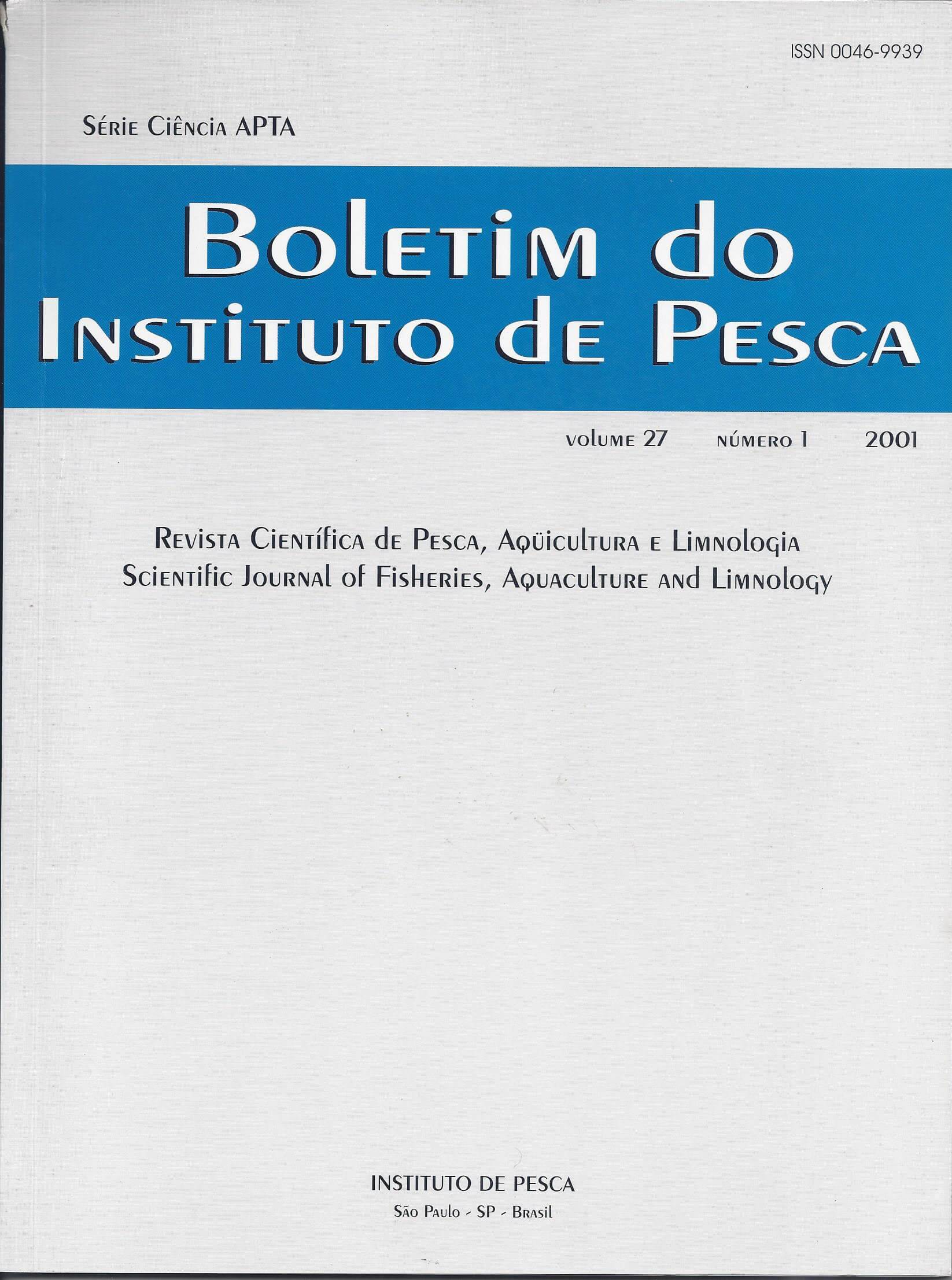Qualitative and quantitative evaluation of silver catfish sperm, Rhamdia quelen
Keywords:
Rhamdia quelen, silver catfish, spermatic concentration, semen motility, pHAbstract
Qualitative and quantitative semen evaluation of silver catfish, Rhamdia quelen, the pH influence on spermatic motility, and the need of reproductive hormonal induction in males were the aims of the present study. Semen samples were collected in two phases: the first used 15 males for qualitative and quantitative semen evaluation and the second used 9 males to assess the influence of pH 4, 5, 6, 7, 8 and 9 on semen motility time of males submitted and not submitted to hormonal induction. In the first phase, mean semen volume collected was 0.41 ± 0.37 mL. Spermatic motility was between 60 and 70% whereas spermatic concentration was between 24,650,000-138,950,000 cells/mm3. In the second phase, three males were induced and a mean motility of 88.30% was found, whereas a mean motility of 72.5% was found in six males not submitted to hormonal induction. No significant difference was found in semen motility time between hypophysed and non-hypophysed males in the different pH levels. Males do not need to be induced to spawn.
References
FOGLI DA SILVEIRA, W.; KAVAMOTO, E. T.; NARAHARA, M. Y.1985 Avaliação da qualidade e criopreservação em
forma de "pellets†do sêmen do bagre, Rhamdia hilarii (Valenciennes, 1840). B. Inst. Pesca, São Paulo, 12 (4):
7-11.
KAVAMOTO, E.T. e FOGLI DA SILVEIRA, W. 1986 Características físicas, químicas e microscópicas do sêmen do bagre Rhamdia hilarii (Valenciennes, 1840) em condições de campo. B. Inst. Pesca, São Paulo, 13 (1): 95-100.
KAVAMOTO, E.T.; MAINARDES-PINTO, C.S.R.; ANDRADETALMELLI, E.F.; CAMPOS, D.E.S. 1997 Produção espermática do curimbatá Prochilodus scrofa, Steindachner, 1881. B. Inst. Pesca, São Paulo, 24 (único): 73-78.
LOPES, J. L. 1998 Influência do pH na água na sobrevivência e crescimento de larvas de jundiá, Rhamdia quelen (Quoi & Gaimard, 1824, Pisces, Pimelodidae) em duas épocas de desova. Santa Maria, Universidade Federal de Santa Maria. (Dissertação de Mestrado, Universidade Federal de Santa Maria), 60p.
NARAHARA, M. Y. 1983 Estrutura da população e reprodução de Rhamdia hilarii (Valenciennes,1840) (Osteichthyes, Siluriformes, Pimelodidae). São Paulo, SP. 266p. (Tese de Doutoramento, Instituto de Biociências, Universidade de São Paulo).
NARAHARA, M. Y.; BASILE-MARTINS, M. A.; GODINHO, H. M.; CIPÓLI, M. N. 1988 Escala de Maturidade, época
de reprodução e influência de fatores abióticos sobre o desenvolvimento gonadal de Rhamdia hilarii (Valenciennes, 1840). Boletim do Instituto de Pesca, São Paulo, 15 (2): 201-211.
SALISBURY, G. W. e VANDERMARK, N. L. 1964 Fisiologia de la reproducción e inseminación artificial de los
bóvidos. Zaragoza, Acribia. 707p.
SHIMODA, E.; ANDRADE, D. R.; CRUZ, G. M.; SILVA, J. F. S.; GODINHO, H. P. 1999 Característica química do plasma
seminal do pacu (Piaractus mesopotamicus Holmberg,1887) hipofisado. Revista Brasileira de Reprodução Animal, 23 (3): 248-249.
SILFVERGRIP, A. M. C. 1996 A systematic revision of the Neotropical catfish genus Rhamdia (Teleostei, Pimelodidae). Stockholm, Department of Vertebrate Zoology, 156p. (Ph.D. Thesis. Museum Natural History
Sweden).
ZAR, J. H. 1996 Biostatistical Analysis. New Jersey:Prentice Hall. 615p.
WOYNAROVICH, E. e HORVÁTH, L. 1983 A propagação artificial de peixes de águas tropicais: manual de extensão. Brasília: FAO/CODEVASF/CNPq. 223 p










